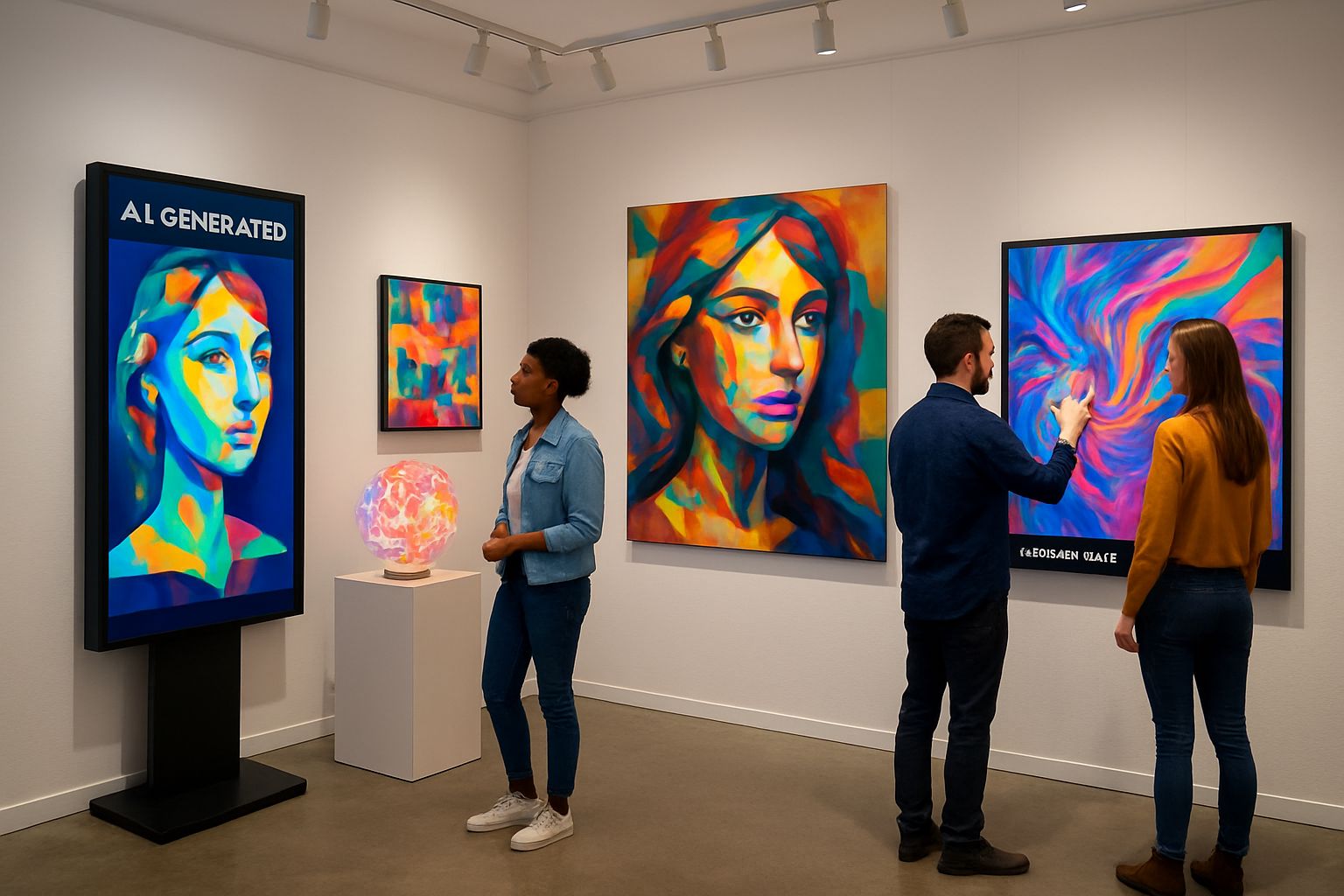
AI CERTS
10 hours ago
AI in Arts: Fact-Checking the London Symphony Rumor
This article examines verifiable projects, technical realities, and unresolved questions. Meanwhile, it situates the London rumor within a broader historical context. Readers will gain a balanced view of Generative Music progress and pitfalls. Therefore, professionals can forecast risks, opportunities, and required skills. Throughout the discussion, AI in Arts will appear as a recurring lens. Let us begin by separating fact from fiction.

Symphony Claim Under Scrutiny
Investigators searched press archives, programme notes, and concert databases covering several seasons. Nevertheless, no listing showed an AI credited as sole composer for any LPO premiere. Furthermore, the orchestra confirmed it used algorithms only for visual effects during the Dance Reimagined festival.
Critics recall Huawei's heavily marketed event that merged machine suggestions with human orchestration. Consequently, some readers conflated that venue with the London Philharmonic brand. Yet careful comparison reveals distinct performers and sponsorships.
These findings dissolve the specific rumor. However, they open a wider inquiry into how news about AI in Arts circulates unchecked.
Tracing Verified AI Projects
Documented milestones illustrate what orchestras have achieved with machine assistance. For example, Deutsche Telekom led Beethoven X, training models on 10,000 works and two million notes. Subsequently, the Beethoven Orchestra Bonn premiered the completed score in 2021.
Another high-profile case involved Huawei guiding Generative Music to finish Schubert’s Eighth Symphony. Composer Lucas Cantor curated fragments, arranged parts, and conducted an English session orchestra. Reviews labeled the outcome cinematic yet structurally thin.
- Beethoven X: model trained on 10,000 pieces.
- Performance premiered on 9 October 2021.
- Huawei event featured 66-piece orchestra at Cadogan Hall.
- Finished runtime approached 48 minutes.
Meanwhile, media framed them as watershed moments for AI in Arts globally. Collectively, these cases verify real advances and real limitations. Therefore, they supply context for present discussions.
How Algorithms Generate Music
Understanding technology clarifies hype and helps professionals evaluate tools. At core, neural networks analyze symbolic scores, audio files, or both to predict likely note sequences. Consequently, the systems output melodies, harmonies, or orchestration hints that resemble training material.
Most platforms qualify as Generative Music engines because they produce fresh patterns rather than simple playback. However, long-form structure remains challenging due to probabilistic errors across hundreds of bars. Researchers therefore stitch sections, apply hierarchical models, or insert human supervision.
This workflow blurs authorship lines between algorithm and human artisan. In practice, final Composition credits still list a human editor or orchestrator. Nevertheless, the marketing often highlights AI in the Arts as sole originator, fueling debate.
Technical nuance reveals collaboration rather than replacement. Subsequently, readers can better assess future claims.
Human Roles Remain Vital
Musicians contribute phrasing, dynamics, and dramaturgy that current models cannot reliably infer. Moreover, orchestrators balance instrumental color and breathing space for live players. Lucas Cantor likened AI to a tireless assistant, not an autonomous master.
Critics such as Goetz Richter argue that machine-generated passages lack deeper emotional architecture. Consequently, performers must inject human expressivity to avoid mechanical impressions. This synergy preserves artistic Creativity while exploring novel textures.
- Select and refine melodic outputs.
- Decide large-scale thematic development.
- Adapt tempi and articulations for acoustics.
Each task underscores why Composition pedagogy remains essential. Therefore, AI in Arts currently amplifies rather than replaces expert labor.
Debate Over Artistic Authenticity
Authenticity disputes predate algorithms, yet machines magnify the tension. Meanwhile, some listeners celebrate fresh timbres and unpredictable modulations. Others lament that Generative Music can feel derivative despite statistical novelty.
Robert Levin notes that algorithms can propose many plausible continuations, none definitively authoritative. In contrast, traditional masters refine every bar through lived experience and philosophical intent. Critics worry that marketing labels may mislead audiences about genuine Creativity.
Additionally, corporate sponsorship raises questions about motives and control. Huawei and Telekom gained immense publicity from their orchestral showcases. Nevertheless, some scholars framed these performances as branding exercises rather than pure art.
The dialogue shows perception shapes value as much as audible sound. Consequently, transparent communication will remain crucial for AI in Arts adoption.
Risks And Legal Questions
Beyond aesthetics, legal uncertainties loom large. Models often train on copyrighted scores without explicit clearance. Consequently, rights holders may allege unauthorized derivative works.
Attribution also complicates royalties because multiple stakeholders co-author final Composition. Moreover, audiences sometimes mistake promotional language, assuming the algorithm owns the piece. Regulators are drafting guidelines, but consensus remains distant.
Meanwhile, orchestras hedge risk by commissioning hybrid works with named composers overseeing outputs. Professionals can deepen skills through the AI+ Designer™ certification, which emphasizes ethical frameworks. Therefore, structured education helps teams navigate compliance and reputational hazards.
Effective governance will determine sustainable Generative Music deployment. Subsequently, we examine future skill demands.
Future Outlook And Skills
Demand for technologist-musicians is rising across studios, festivals, and streaming startups. Additionally, data scientists who appreciate tonal form gain competitive advantage. Institutions now integrate AI in Arts courses into music degrees worldwide.
Meanwhile, orchestral managers recruit programmers to build interactive concert apps. Hybrid roles blend score analysis, system tuning, and live electronics Creativity. Consequently, certifications offer accelerated pathways for busy professionals.
- Dataset curation respecting copyright.
- Probabilistic modeling for Generative Music output.
- Orchestration and human-computer collaboration.
- Audience experience design fostering inclusivity.
These competencies align with market projections valuing Composition technologists highly. Moreover, ongoing research promises better long-range coherence and adaptive performance feedback.
The horizon appears exciting yet uncertain. However, continued dialogue will shape responsible AI in Arts evolution.
The evidence confirms no LPO premiere of a fully algorithmic symphony. Nevertheless, documented experiments prove orchestras already benefit from machine collaboration. Consequently, opportunities mushroom across Generative Music, Composition, and interactive Creativity. Professionals who track AI in Arts trends can spot both artistic gaps and commercial niches. Moreover, ethical literacy and clear authorship policies will protect reputations. Therefore, consider advancing skills through the AI+ Designer™ program or similar courses. Additionally, share this analysis with colleagues shaping future concerts. AI in Arts still writes its score; join the ensemble today.



